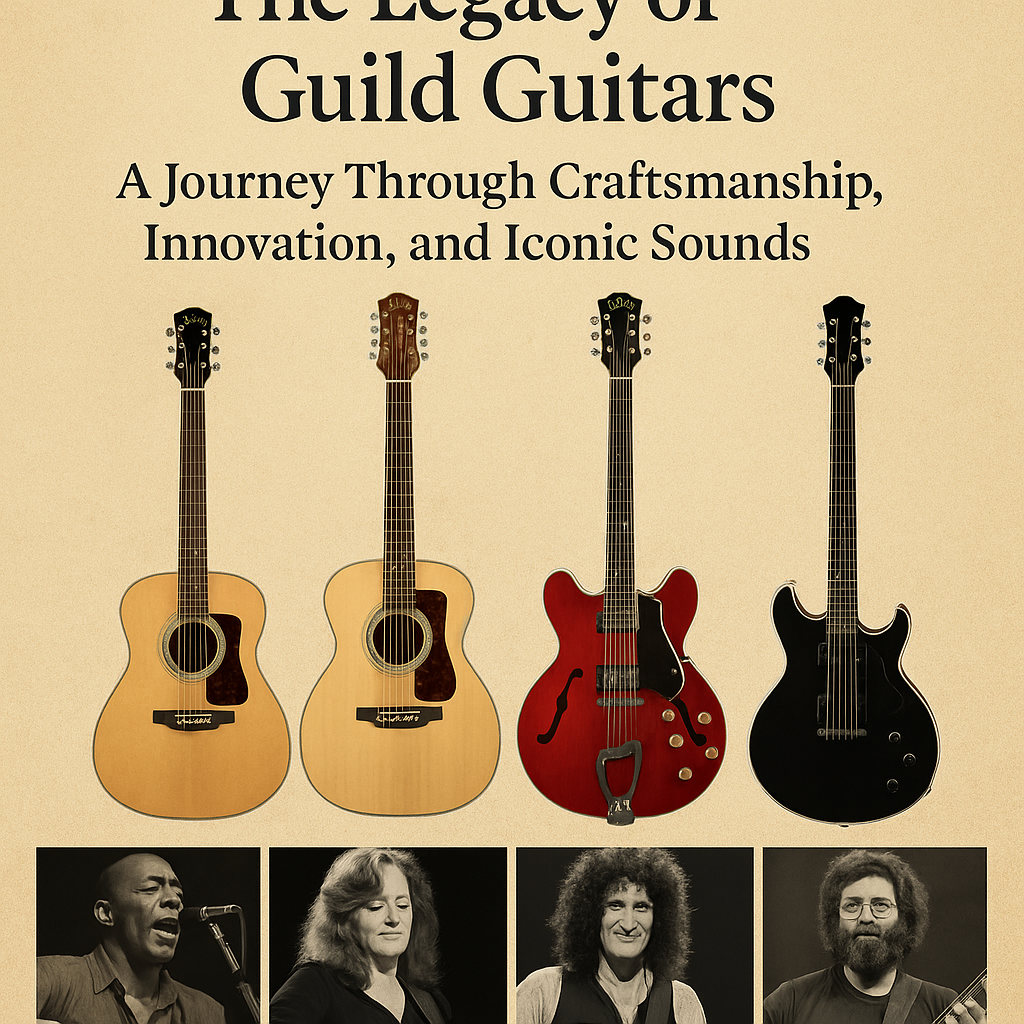Few names in the world of guitar manufacturing evoke the same reverence and nostalgia as Guild Guitars. Since its founding in the early 1950s, Guild has carved out a unique space in the pantheon of American guitar makers—renowned for its rich acoustic tones, solid build quality, and its enduring appeal among legendary musicians.
A Humble Beginning in New York City
Guild Guitars was founded in 1952 by Alfred Dronge, a music store owner and guitarist, and George Mann, a former executive at Epiphone. Originally based in Manhattan, Guild began by producing archtop guitars geared toward jazz musicians—an underserved market following Epiphone’s move to Philadelphia and the changing focus of Gibson.
Their early guitars, like the X-175 Manhattan and CE-100 Capri, immediately gained traction among jazz players due to their warm tone, solid construction, and affordability compared to other high-end competitors.
Expansion and the Rise of Acoustics
As the folk music revival took hold in the 1960s, Guild was well-positioned to meet the growing demand for high-quality acoustic guitars. They relocated operations to Hoboken, New Jersey, and later to Westerly, Rhode Island, where many of their most iconic instruments were produced.
Among their standout models was the D-55, a dreadnought-style acoustic introduced in 1968. Known for its powerful projection, elegant mother-of-pearl inlays, and spruce/rosewood tonewood combination, the D-55 became a flagship model that remains a favourite among professionals.
Another hallmark was the F-512, a 12-string acoustic that offered shimmering, chorus-like tones and impeccable sustain. It became one of the most beloved 12-strings ever produced.
Iconic Players and Their Guilds
Over the decades, many iconic artists have chosen Guild guitars for their tone, durability, and aesthetic. Notable players include:
-
Richie Havens, who famously opened Woodstock in 1969 with a Guild D-40. His percussive strumming and soulful delivery showcased the guitar’s power and resonance.
-
Bonnie Raitt, a blues and slide guitar legend, frequently played a Guild F-50.
-
Brian May of Queen, who used a Guild BM01 signature model designed to replicate his homemade “Red Special” guitar.
-
Jerry Garcia of the Grateful Dead, who played a custom Guild Starfire IV before transitioning to more customised instruments.
-
Nick Drake, the enigmatic British singer-songwriter, used a Guild M-20 on several of his recordings, giving his melancholic fingerstyle playing a dark, woody character.
The Electric Chapter
While best known for their acoustics, Guild also made waves in the electric market. The Starfire series, launched in the 1960s, competed with Gibson’s ES line. Models like the Starfire IV and Starfire V featured semi-hollow designs with lush, articulate tones favoured by blues, jazz, and rock musicians alike.
Later, in the 1970s and ’80s, Guild introduced solid-body models such as the S-100, a guitar that visually echoed a Gibson SG but offered a distinct tonal palette. It became a favourite of Kim Thayil from Soundgarden, who embraced its gritty, powerful tone for grunge and heavy rock.
Ownership Changes and Revival
Guild went through several ownership changes—from Avnet Corporation in the 1960s to Fender Musical Instruments Corporation (FMIC) in 1995. Production moved to California and then to Tacoma and Connecticut, resulting in mixed reactions from players and collectors who prized the Westerly-era builds.
In 2014, Guild was acquired by Cordoba Music Group, which revitalised the brand. They opened a new factory in Oxnard, California, returning to the company’s tradition of high-quality American craftsmanship. Modern reissues of classic models, like the D-40 Traditional and Starfire VI, have been met with critical acclaim.
A Brand That Endures
Guild Guitars has never been about flash or hype—they’ve earned their place through consistency, tone, and a commitment to quality. Whether it’s a dreadnought ringing out in a stadium or a 12-string shimmering on a folk ballad, Guild guitars have remained steadfast companions to countless musicians for over 70 years.
For collectors, performers, and tone purists, a Guild isn’t just a guitar—it’s a piece of musical history.









